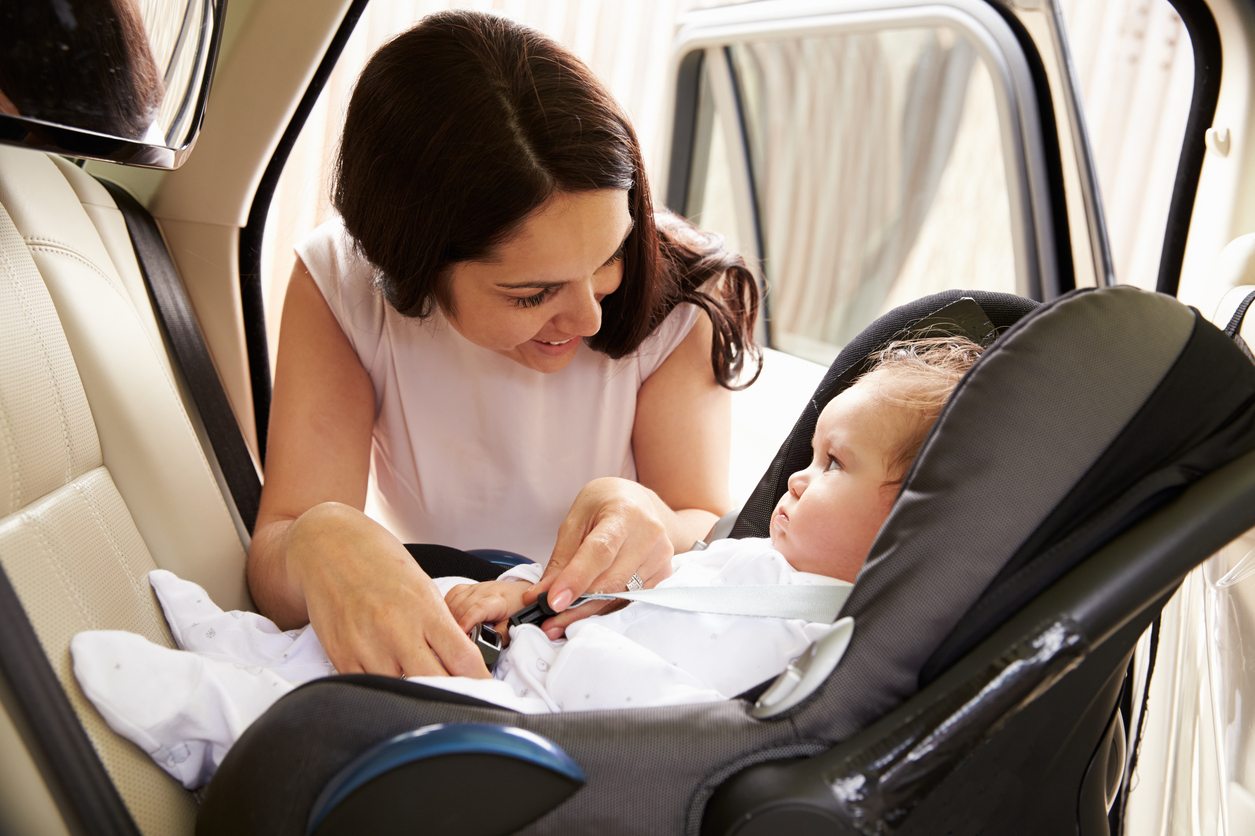Car safety is important for everyone, but when you have children it’s vital for parents to be aware of safety guidelines when it comes to keeping kids correctly protected in cars. According to the Road Safety Authority (RSA), in a crash at just 50km per hour, a child who is not adequately restrained would be thrown forward with a force 30 to 60 times their body weight. So not only they would be very seriously injured, but they would also act as a human missile within the car, injuring or even killing others. Between 1996 and 2012, 262 children were killed in car crashes, and almost a third of those were not using child seats or seatbelts. More recent statistics from the RSA show that over twice as many children were killed in crashes in 2014 than 2013.
Scary stuff. Here are six things you really need to know TODAY about keeping your children safe in the car
Age is no longer a guideline
Gone are the days when age was used as a guide for child seats, simply because every child grows and develops at different rates. The law states that all children under 150cms in height or 36kgs (79lbs) in weight must use a child restraint system suitable for their height and weight while travelling in a car or goods vehicle (other than a taxi).
There’s no law against a child travelling in the front seat
A child can legally travel in the front seat, as long as they are wearning the correct restraint system. However, it is illegal to use a rearward-facing child seat in the front seat where the airbag has not been disabled. If an airbag was to open up in front of a rear-facing child seat, it could cause serious injury or even death. If you are caught using a rear-facing child seat on the front seat where the airbag was still active, you could receive at least three penalty points on your driving licence as a penalty.
An adjustable car seat can save you money
Child restraint systems are categorised in groups according to the weight of the children they are suitable for. There are four main child car seat groups – Groups 0, 1, 2 and 3. However, some child restraint systems are convertible and can be adapted as the child grows.
- Group 0 Rear-Facing Baby Seat: Birth-10kg
- Group 0+ Rear-Facing Baby Seat: Birth-13kg
- Group 1 Rear- or forward-facing child seat: 9-18kg
- Group 1/2/3 High-Back Booster with Removable Harness: 9-36kg
- Group 2 High-Back Booster Seat without Harness: 15-25kg
- Group 2/3 High-Back Booster Seat without Harness: 15-36kg
- Group 3 Booster Cushion: 22-36kg
When buying a car seat, it’s important to choose the right one for your child’s weight and to regularly check that it’s still appropriate for your growing child.
The European safety standard code is changing
i-Size is a European standard called Regulation 129, which was introduced in Ireland in September 2014. i-Size standard seats can be fitted to most ISOFIX systems and they provide increased support for the child’s head and neck. They also provide better side-impact protection in the event of collisions. An i-Size seat also allows your child to stay rear-facing for much longer (up to 15 months in a rearward-facing baby seat). The categorisation of these seats is based on height and size rather than height and weight. i-Size (Regulation 129) and Regulation R4403/04 (the older European quality standard) are both legal for use and will run alongside each other until the R4403/04 is phased out.
Never buy secondhand
Buying secondhand is a great way to save money on many baby items, but always buy a NEW carseat as you don’t know the history of a secondhand car seat or restraint system. If a seat has been in a collision, do not use it as the safety of the seat has been compromised.
Get a seat fitted by an expert
The best way to ensure your child seat is correctly fitted is to buy from a reputed retailer who can fit the seat for you and show you how to fit it yourself if you need to move it. You should also make sure to keep in a safe place the instructions on how to fit it should you need the instructions in the future. The RSA has also produced a DVD that gives examples of how to fit some car seats – order your copy on www.rsa.ie. When the car seat is fitted correctly, it should sit firmly on the back seat with no forward or sideways movement when tested. If you are in any doubt, visit the RSA’s Child Car Seat Checking Service – Check it Fits. Look for dates in your area at www.rsa.ie/checkitfits









